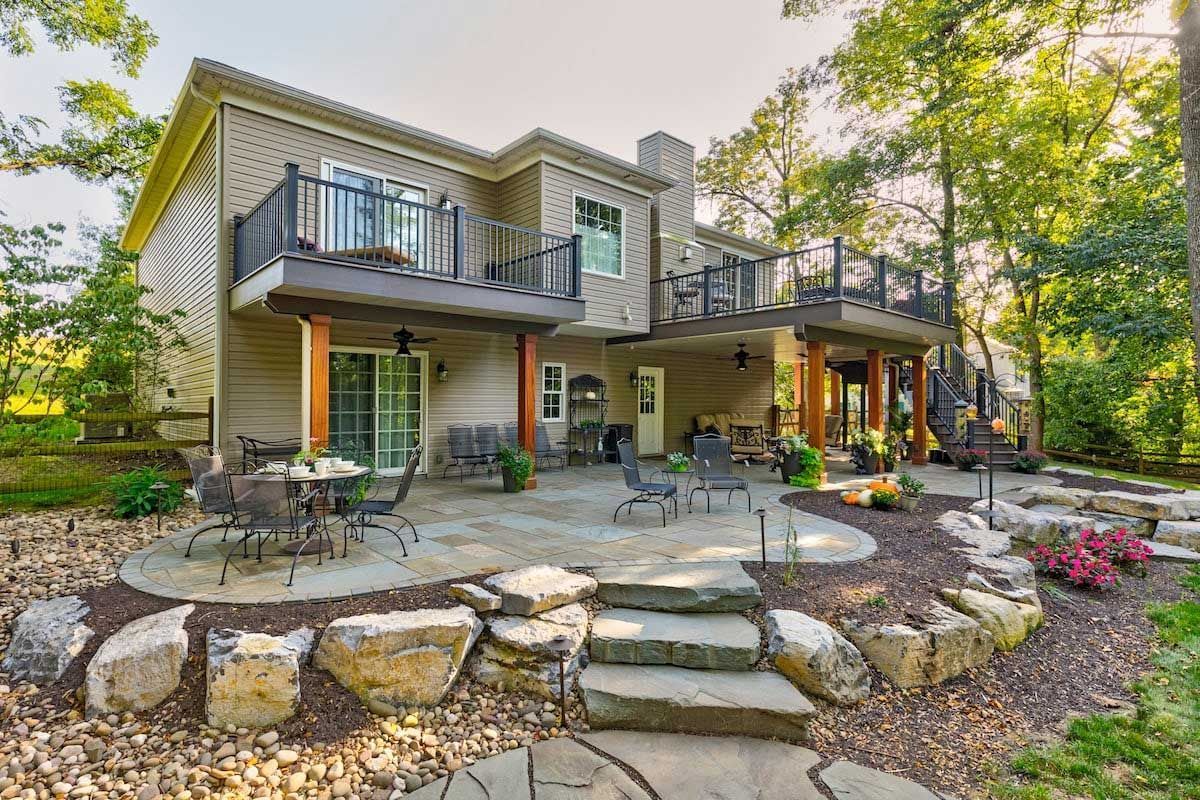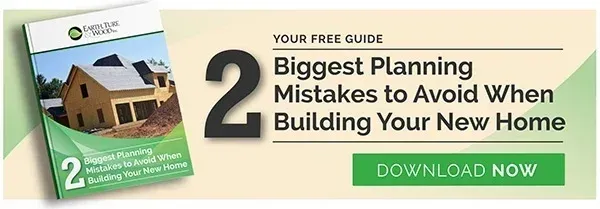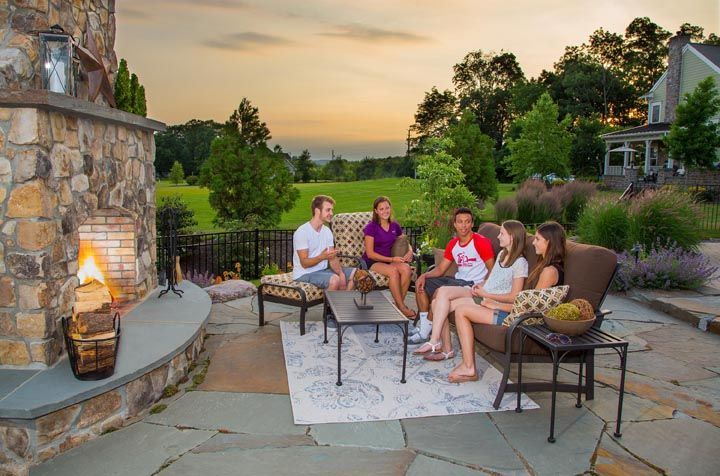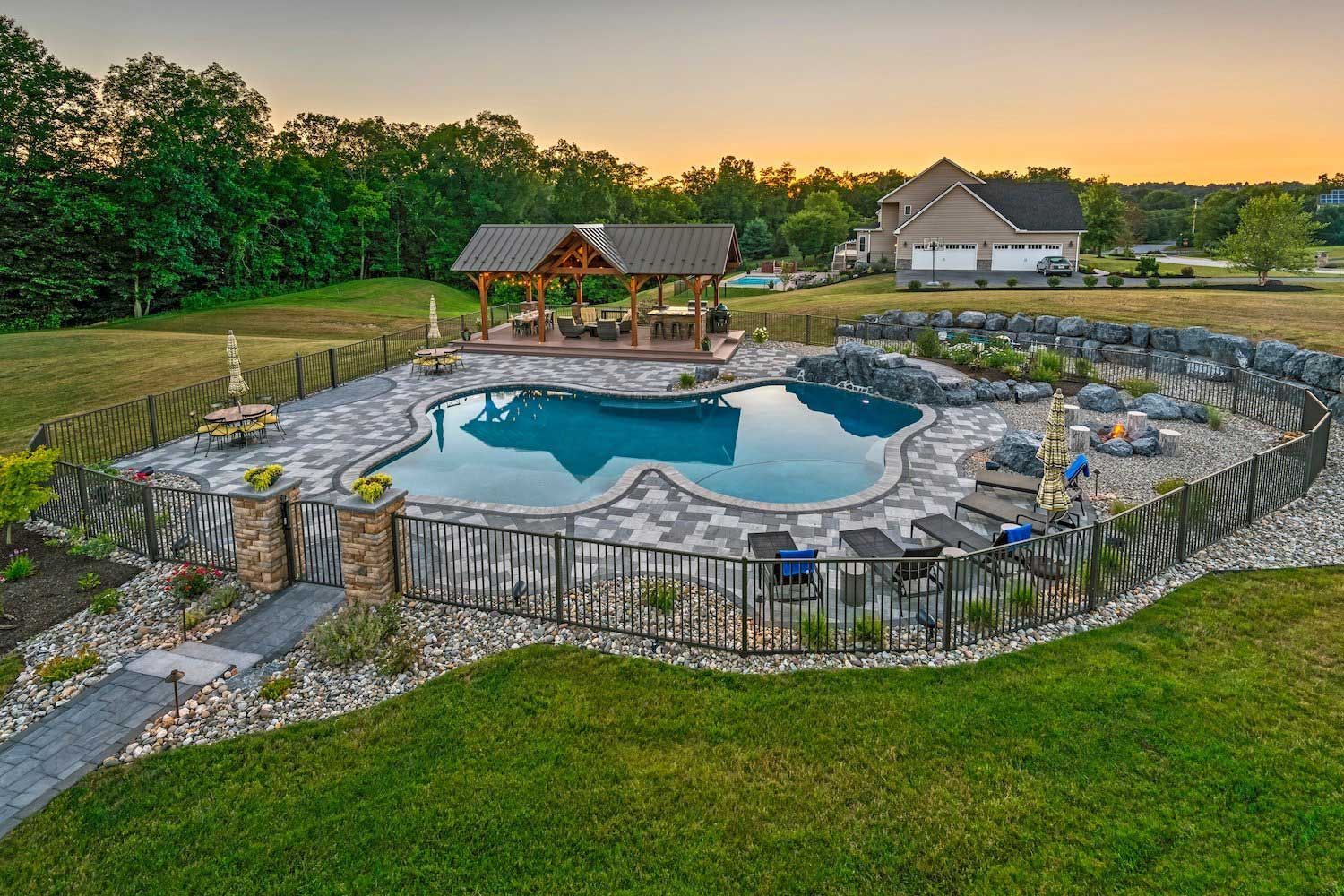What is Overdig Stabilization And Why Should You Care?
We’ve been in the landscaping business now for 16 years and have built millions of dollars in hardscapes. One thing we are adamant about is making sure each and every project is built correctly to ensure it lasts a long time. Sometimes this means addressing issues that other landscape contractors just ignore.
When we do construction close to house foundation walls, often times we run into a situation that requires what we call “Overdig Stabilization.” Sounds technical... but in fact it is an extremely critical issue that must be addressed before any hardscape is installed.
The Problem:
In layman’s terms this is what happens: When houses are built, often times the foundation is backfilled with the dirt, rock, and other junk found on-site. Why? Because it’s the most cost-effective way for a builder to do it. This dirt is not compacted and over time it settles against the foundation walls. (It could take 10-20 years to reach original compaction if it ever does.)
What happens as a result of this soil not being compacted? Bad things that cost lots of money! If a patio is installed immediately, over the course of about 3-5 years it will settle and pitch towards the house. Then the water from rain runs towards the house causing water in the basement, wood rot, etc. It can become very costly to fix.
When ETW shows up, we analyze this situation. Often times we see:
- Cracked concrete pitching towards the foundation
- Low dirt areas
- Water problems in the basement
An inexperienced hardscape contractor would just put their stone base down and build a new patio. We won’t do that. We want to correct the entire issue so that it NEVER happens again. Does it cost more to do this? Yes, but in 5 years you won’t have to rip it all out and start over AGAIN.
When potential clients tell us they are meeting with several landscaping contractors for their project I will tell them, “Ask the others if they are going to look at the overdig stabilization or even know what it is. If they don’t know, they don’t have the experience to do the job correctly.” Bill Albertson, territory manager for EPHenry, (a premier hardscape supply manufacturer) says that a very small percentage of contractors do this or even know what it is.
The FIX:
There are two ways you can address the issue. First, when your house is built, have the builder backfill the foundation with clean stone. This is the least costly method. If this wasn’t done, we will come in and dig down about 4-6 feet and put clean stone back in and stabilize the area before we do any hardscape. (See images, below left, of what needs to be done and how we do it.) You need to dig all bad dirt out that is against the foundation and fit it with stone.
At the end of the day this may cost more, and our price to build your project might be more expensive than the other contractors, but our reputation is on the line. (We don’t want a call back from our customers in 5 years asking why it settled again!)
Every year we do repair projects for people who made the decision to “save a little bit of money” and use a cheaper landscape contractor. Unfortunately, 4 or 5 years later they are back talking to us because the cheaper project failed and they end up spending far more money than they would have had to. It is heartbreaking. Do it right the first time!

Written by
Jarod Hynson, President
Jarod started Earth, Turf, & Wood in the spring of 2000. Getting his start with a lawn care company in his teens, his experience spans 25 years’ in the green industry. His underlying passion is to create well-thought-out outdoor living environments that help create memories for families and friends. Jarod was raised in Central New Jersey, pursued Human Resource Management at Messiah College, and resides in Mohnton, PA. He enjoys spending time with his wife Kristy and their two young daughters and son. He currently serves on the local advisory board for Fellowship of Christian Athletes. In his spare time he enjoys just being outdoors, whether vacationing in the Adirondacks, or playing with his kids.






